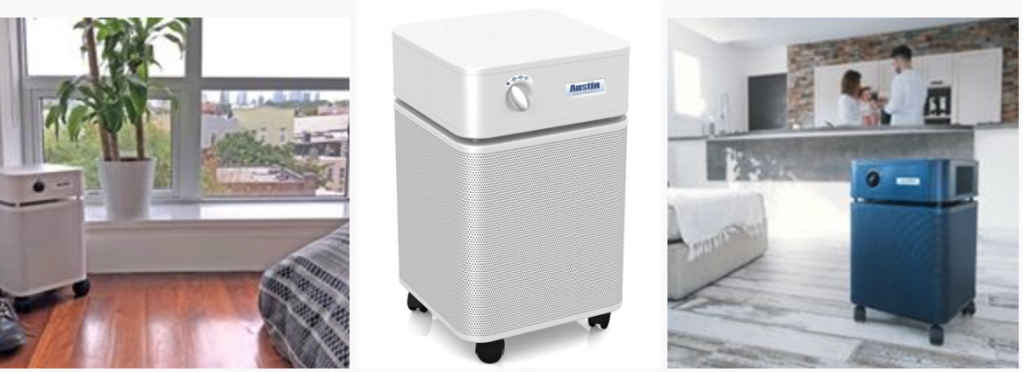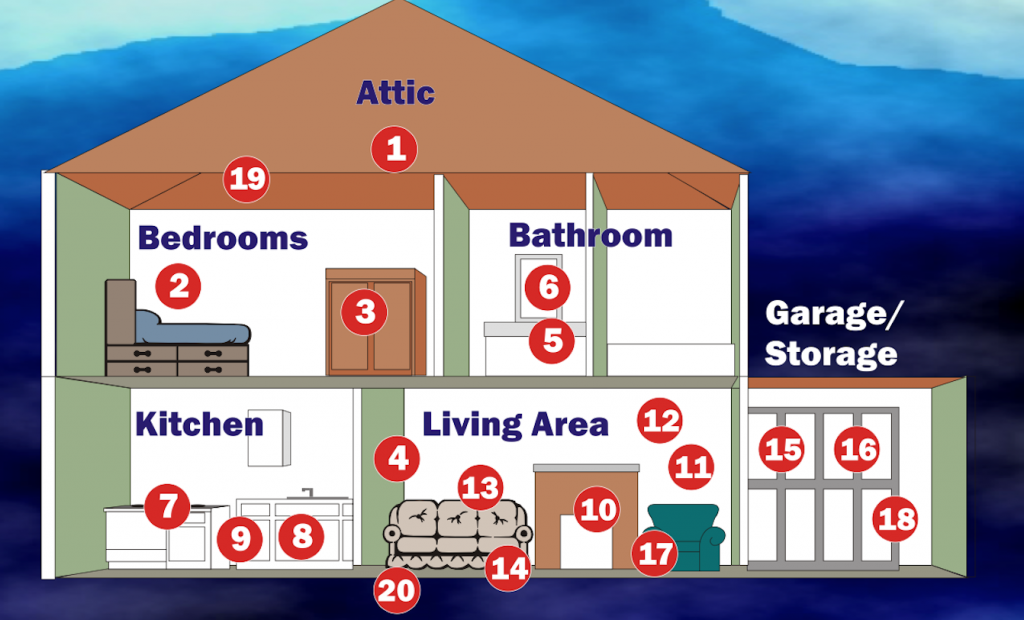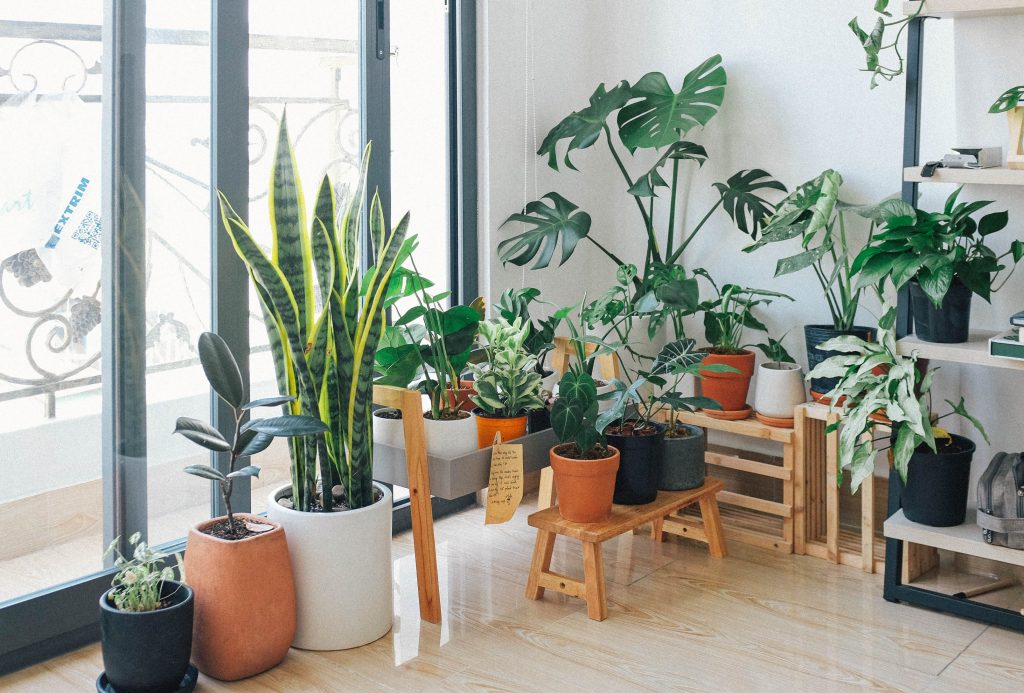
Is Your Home Making You Sick?
Common Airborne Contaminants in the home
If you are going to stay in your home for an extended period of time it is important to know if you are living with elements that are sapping your energy and causing you to lose mental focus. Let’s take a look at your immediate environment and rule out something potentially much more serious.
Suffices it to say employing a premium segment air purifier such as the Austin HealthMate will absorb pollutants, allergies and chemicals done to .03 microns.
Your home can be the root cause of any number of illnesses, some quite serious. Here is a list of items in your home that may be making you sick.
1. Insulation, the jagged edged particles of fiberglass if inhaled can
cause major eye nose and throat irritation. However asbestos, which can still be found in older houses, is far more serious, if your house is older have it looked into immediately. Urethane is of concern as well.
- Exposure to asbestos is most common at the workplace but is also common in the military and even in the home. Being exposed to asbestos can lead to asbestos-related diseases including pleural plaques, asbestosis, lung cancer and mesothelioma. Occupational exposure is the No. 1 cause of asbestos disease.
- Inhaling Urethane can irritate the nose and throat. ► Very high exposure can cause headache, nausea, vomiting, dizziness, lightheadedness and passing out. may affect the brain and bone marrow.
Pressed wood in furniture and flooring: manufactured with formaldehyde, which is released as a gas.
2. Dry cleaning:source of toxic toluenes and PERC.
3 . Perchloroethylene (also known as tetrachloroethylene) is
considered a toxic air pollutant by the EPA, meaning that it’s “known or suspected to cause cancer or other serious health effects.” Short, intense blasts of perc can cause dizziness, headaches, or loss of consciousnessDust mites: the excreta and body parts of these organisms are a common allergen, a particular problem in bedrooms.
4. Lead: Found in older paints and plumbing pipes.
5. Exposure to lead can seriously harm a child’s health,
including damage to the brain and nervous system, slowed growth and development, learning and behavior problems, and hearing and speech problems.
6. Aerosols found in personal care products: a common source of organic gasses, some of which are carcinogens.
a. The long-term effects of aerosol inhalation are still being researched, but it seems that most of the short-term damage from the chemicals in the solvents is reversed once the user stops. However, there is the possibility of long-term damage, including brain damage and liver or kidney damage.
7. Gas stove: source of combustion by-products.
a. Gas Stove Dangers. When properly installed, vented and
maintained, gas stoves are reasonably safe appliances. … The primary dangers of g as stoves are carbon monoxide poisoning, gas leaks and toxin exposure.
8. Household cleaning products: contain harmful volatile chemicals.
9. Pesticides: source of extremely toxic chemicals.
10. Smoke from fireplace or wood stove: open fireplaces can produce ash dust, carcinogenic tars and combustion by-products like carbon monoxide and nitrogen oxides.
a. Elevated levels of nitrogen dioxide can cause damage to the human respiratory tract and increase a person’s vulnerability to, and the severity of, respiratory infections and asthma. Long-term exposure to high levels of nitrogen dioxide can cause chronic lung disease.

11. Wall coverings: plasticized wallpapers can emit VOC’s wood paneling is often produced with formaldehyde.
Austin Air Purifiers remove the chemicals that cause health problems.
a. Acute (short-term) and chronic (long-term) inhalation exposure to formaldehyde in humans can result in respiratory symptoms, and eye, nose, and throat irritation. Limited human studies have reported an association between formaldehyde exposure and lung and nasopharyngeal cancer.
12. Draperies: treated fabrics often contain formaldehyde. Curtain folds collect dust.
13. Tobacco smoke contains 43 carcinogens, the danger to nonsmokers especially children is clear.
14. Carpets: Source of formaldehyde. Harbor dust, dust mites and pet dander.
15. Paints and solvents: are the sources of many volatile chemicals.
a. Breathing VOCs can irritate the eyes, nose and throat, cancause difficulty breathing and nausea, and can damage the central nervous system as well as other organs. Some VOCs can cause cancer.
16. Fuels: Storage of gasoline, kerosine, and other fuels release volatile chemicals into household air.
17. Pet Dander: Animal hair and skin flakes are a common source of allergens.
18. Auto Exhaust: Such fumes can enter the house from the garage or nearby traffic flow. Carbon monoxide is the primary danger and has a cumulative effect in the human system.
19. Asbestos fibers – if inhaled into lung tissue – cause lung cancer and emphysema. Radon: radon gas is a neutral emission where uranium exists underground.
20. Radon carries radioactive particles that can cause lung cancer. So What is the answer here?

Let us go down the list of potential hazards living in your home.
1.Asbestos – if your home contains asbestos and it is not encapsulated, then it can make you sick. Get rid of it, or move.
2. Formaldehyde – if it’s in your house, and you may not know you are breathing it in on a daily basis – get some air cleaning plants (hopefully you have a green enough thumb and dont kill them from neglect) some examples are:
English Ivy
Bamboo Palm – benzene & formaldehyde
Peace Lily – carbon monoxide & formaldehyde
Spider Plant – pollutants
Rubber Tree – absorb harmful chemicals
Pothos – carbon monoxide, xylene, toluene and more!
Parlor Palm – trichloroethylene, benzene.
Those plants will go to work for you and help promote a more healthy environment.
3. Dry Cleaning chemicals – change your dry cleaner to a green version. Someone who does not use those chemicals.
4. Dust Mites. Be sure your HVAC has a filter change regularly, wash your sheets and pillowcases regularly and vacuum with a HEPA filter.Lead in the paint, if you believe the pain in your house (this will only go for homes built before the1990’s) then get scrapings tested, if you have it get rid of it. Lead is nasty stuff.
Aerosols – just chuck them and use something else, you have choices mate!
Gas stove, have a plumber look at the fittings and couplings to confirm that when it is off, it is indeed off.
Household cleaning products – get the green versions – seriously. Pesticides – again you can ask your exterminator if they have an organic or green version, most do and are happy to use the alternative version.
Dust in the fireplace – we are Australia – if you have a fireplace you are posh – congratulations! When not in use clean it up, you don’t want to be breathing that into your lungs.
In summary – if you plan on staying home – take an inventory, be sure that your home isn’t the one causing you not to feel your best before sending up alarm bells. And besides, it is not a bad idea to give your home a health check anyway. Buying air cleaning plants is one option. However the best thing you can do for yourself is investing in a premium air purifier such as the HealthMateJR or HealthmateJR+ will go a long way in protecting your health and well being now and in the future.
Air Purifier, air purifiers australia, Dust, dust mites, home, organic, organic cleaners, sick, wellness
